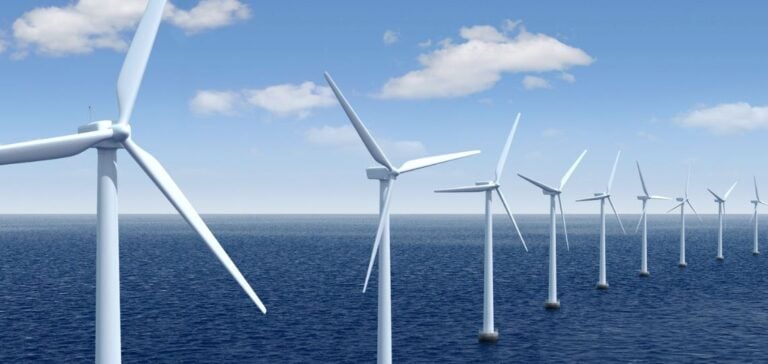The next ten years will mark a phase of unprecedented expansion for renewable energies, with an increase of 5.4 terawatts (TWac) in new solar and wind capacity, according to analysis by Wood Mackenzie. This growth will bring total worldwide capacity to 8 TWac by 2033. At the same time, energy storage is expected to grow by 640%, reaching almost 1 TW, a key indicator of the transformation of the global energy sector.
Solar and Wind Power Capacity in Full Expansion
Between 2024 and 2033, the annual capacity of new solar and wind power plants will rise from an average of 500 GW in 2023 to 560 GW. China will play a central role in this expansion, with a forecast of 3.5 TWac of new capacity. Luke Lewandowski, Vice President of Renewable Energy Research at Wood Mackenzie, points out that ambitious national policies, technological innovation and energy security concerns are the main drivers of this growth, despite challenges such as inflation and grid constraints.
Evolution of Energy Storage
Energy storage, excluding hydro-pumping, is set for exceptional growth, with an increase of 636% to nearly 1 TW by 2033. By 2023, the global energy storage market will have grown by a record 162% compared with 2022. Anna Darmani, Senior Analyst at Wood Mackenzie, reports that political support, in the form of tax exemptions and hybrid auctions, is accelerating the implementation of storage projects across all regions.
Focus on Photovoltaic Solar Energy
Worldwide solar photovoltaic capacity is set to almost quadruple by 2033. Wood Mackenzie projects 4.7 TWdc of new installations, with China accounting for 50% of this growth. Low solar module prices have intensified deployment, particularly in Europe and China. However, challenges related to grid constraints and fluctuating electricity prices could affect other regions. Juan Monge, Senior Analyst at Wood Mackenzie, stresses the importance of technological developments and infrastructure expansion in maximizing this growth.
Outlook for Wind Energy
The global wind industry will add more than 1.7 TW of new capacity over the next ten years. China will continue to dominate this sector, with average annual additions of 91.5 GW. Lucas Stavole, Senior Analyst at Wood Mackenzie, notes that the Chinese government’s energy transition plans are stimulating these long-term investments. However, challenges such as permitting, grid access and supply chains could affect installed capacity between 2024 and 2026, displacing some capacity to 2027 and beyond.
Regional dynamics and market trends
Excluding China, global wind power additions are expected to average 85 GW per year, up sharply on the 37 GW average of the previous ten years. In the Americas, additions will total 230 GW by 2033, supported by the booming offshore wind sector and ongoing government incentives. Offshore wind power, which connected 11 GW in 2023, is expected to connect an average of 39 GW per year between 2024 and 2033.
This significant expansion in solar and wind power capacity, accompanied by a substantial increase in energy storage, underlines a major transformation in the global energy sector. However, meeting the challenges of grid infrastructure and permitting is crucial to maximizing the potential of renewable energies in the years ahead.






















